We subjected the Oppo Find X6 Pro to our rigorous SBMARK Battery test suite to measure its performance in terms of range, charging and efficiency. In these test results, we’ll analyze how it performed in a variety of tests and several common use cases.
Overview
Key Specifications:
- Battery Capacity: 5000mAh
- 100W charger (included)
- 6.82-inch, 1440 x 3168, 120Hz OLED display
- Qualcomm Snapdragon 8 Gen2 (4nm)
- ROM / RAM combination tested: 256GB + 16GB
Pros
- Excellent recharge time, taking 46 minutes and 17 seconds to recharge the battery
- Excellent wireless charging experience, takes 1 hour to charge
- More than 63 hours of battery life with moderate use
- A 5-minute recharge provides 10 hours and 25 minutes of additional autonomy
- Low overall discharge currents
Against
- High residual power discharged when smartphone is connected or disconnected to wired charger
- High residual power absorbed by the wireless holder
- Low battery life when using the camera
- Battery life below average when listening to music
The Oppo Find X6 Pro performed very well in our battery test protocol, reaching second place in our overall battery ranking and taking first place among phones in our Ultra-Premium segment. The Find X6 Pro clearly outperformed the Oppo Find X5 Pro with much better runtimes and efficiency. The device also showed a slight improvement over its predecessor’s excellent charging experience.
The battery life of the device was very good, lasting 63 hours and 39 minutes when used moderately. Battery life tests of individual use cases showed excellent results when streaming video and gaming, as well as when calling and scrolling through social apps outdoors. However, the runtimes were quite poor when using the camera.
The Oppo Find X6 Pro charging experience was excellent for both wired and wireless charging. It took just 46 minutes and 17 seconds to fully recharge the battery with the 100W wired charger and 1 hour with the wireless stand. In addition, a 5-minute quick charge provided an excellent battery life of 10 hours and 25 minutes on average. However, the remaining power consumed by these two chargers was high, especially when the fully charged device was still on the wireless cradle.
The charging efficiency of the device was good and slightly above the average in our database. When it came to download efficiency, the device’s power consumption was low for all uses except when using the camera, which indicates that the device is generally well optimized.
When compared to other devices in the Ultra-Premium price range ($800+), the Oppo Find X6 Pro reached the top of our ranking, with the best charge score for this segment. But the Oppo Find X6 Pro’s defining performance feature was that its results were high in all of our subscores, including range and efficiency.
Trial summary
Learn about SBMARK battery tests: For scoring and analysis in our smartphone battery reviews, SBMARK engineers conduct a series of objective tests over a one-week period both indoors and outdoors. (See our introduction and how we test articles for more details on our smartphone’s battery protocol.)
The following section compiles the key elements of our extensive testing and analysis performed in the SBMARK laboratories. Detailed performance evaluations in the form of reports are available upon request. Do not hesitate to contact us.
| Drums | Battery charger | wireless | Screen | Processor | |
|---|---|---|---|---|---|
| Oppo Find X6 Pro | 5000mAh | 100W (not included) |
50W | AMOLED 1440 x 3168 |
Qualcomm Snapdragon 8 Gen 2 |
| Oppo Find X5 Pro | 5000mAh | 80W (included) |
50W | (LTPO)OLED 1440 x 3216 |
Qualcomm Snapdragon 8 Gen 1 |
| Xiaomi 13Pro | 4820mAh | 120W (included) |
50W | AMOLED 1400×3200 |
Qualcomm Snapdragon 8 Gen 2 |
| Honor Magic5 Pro | 5100mAh | 66W (not included) |
50W | OLEDs 1312 x 2848 |
Qualcomm Snapdragon 8 Gen 2 |
How the Autonomy score is composed
The Battery Life Score is composed of three performance sub-scores: Home/Office, On the Go, and Calibrated Use Cases. Each subscore includes results from a full range of tests to measure range in all kinds of real-life scenarios.
91 hours
Light use
Active: 2h30/day
64 hours
Moderate use
Active: 4h/day
40 hours
Intensive use
Active: 7h/day
Home office
A robot housed in a Faraday cage performs a series of touch-based user actions during what we call our “typical usage scenario” (TUS) — making calls, streaming video, etc. — 4 hours of active use over the course of a 16 hour period, plus 8 hours of “sleep”. The robot repeats this series of actions every day until the device runs out.
In movement
129
Samsung Galaxy M51
Samsung Galaxy M51
Using a smartphone on the go has a negative impact on range due to additional “hidden” demands, such as continuous signaling associated with cellular network selection. SBMARK Battery experts take the phone outdoors and perform a series of precisely defined activities following the same three-hour travel itinerary (walking, taking the bus, the subway…) for each device
Calibrated
130
Samsung Galaxy M51
Samsung Galaxy M51
For this series of tests, the smartphone returns to the Faraday cage and to ours bots repeatedly perform actions related to a specific use case (like gaming, video streaming, etc.) at a time. Starting with an 80% charge, all devices are tested until they have used at least 5% battery power.
Reload
167
Realme GT Neo 5 (240W)
Realme GT Neo 5 (240W)
How the recharge score is composed
Charging is fully part of the overall battery experience. In some situations where range is at its lowest, knowing how fast you can charge becomes a concern. The SBMARK Battery Charging Score consists of two subscores, (1) Full Charge and (2) Fast Boost.
Charge complete
156
Realme GT Neo 5 (240W)
Realme GT Neo 5 (240W)
The full charge tests evaluate the reliability of the battery charge indicator; measure how long and how much energy it takes for the battery to charge from zero to 80% capacity, from 80 to 100% as shown by the user interface, and to an actual full charge.
The charging curves, in wired and wireless mode (if available) showing the evolution of the battery level indicator as well as the energy consumption in watts during the charging phases towards full capacity.
The charging curves, in wired and wireless mode (if available) showing the evolution of the battery level indicator as well as the energy consumption in watts during the charging phases towards full capacity.
Quick push
178
Realme GT Neo 5 (240W)
Realme GT Neo 5 (240W)
With the phone at different charge levels (20%, 40%, 60%, 80%), the Quick Boost tests measure how much charge the battery receives after being plugged in for 5 minutes. The graph here compares the average range gain with a 5-minute quick charge.
Efficiency
135
Oppo Reno6 5G
Oppo Reno6 5G
How the efficiency score is composed
The SBMARK Energy Efficiency Score consists of two subscores, charge rate and discharge rate, which combine both data obtained during a typical robot-based usage scenario, calibrated testing and charge rating, taking into consideration battery capacity of the device. SBMARK calculates the product’s annual energy consumption, shown in the graph below, which is representative of overall efficiency during a charge and when in use.
Charge Up
147
Nubia RedMagic 7 Pro
Nubia RedMagic 7 Pro
The secondary charge score is a combination of four factors: the overall efficiency of a full charge, relating to the amount of energy required to recharge the battery compared to the energy the battery can supply; the efficiency of the travel adapter when it comes to transferring power from an outlet to your phone; the remaining consumption when the phone is fully charged and still connected to the charger; and the residual consumption of the charger itself, when the smartphone is disconnected from it. The graph below shows the overall efficiency of a full charge in %.
Discharge
129
Apple iPhone 14 Pro
Apple iPhone 14 Pro
The sub-discharge score evaluates how quickly a battery discharges during a test, which is independent of battery capacity. It is the ratio between the capacity of a battery and its autonomy. A small capacity battery may have the same run time as a large capacity battery, indicating that the device is well optimized, with a low discharge rate.


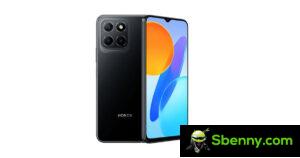
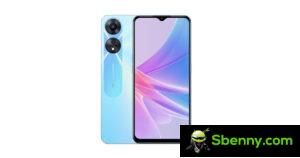
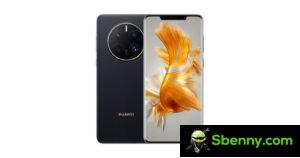
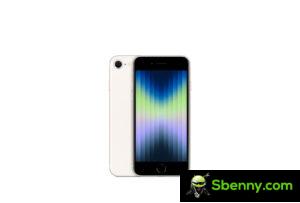
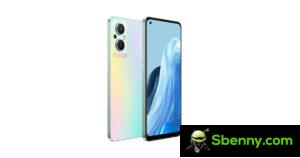
Start a new Thread